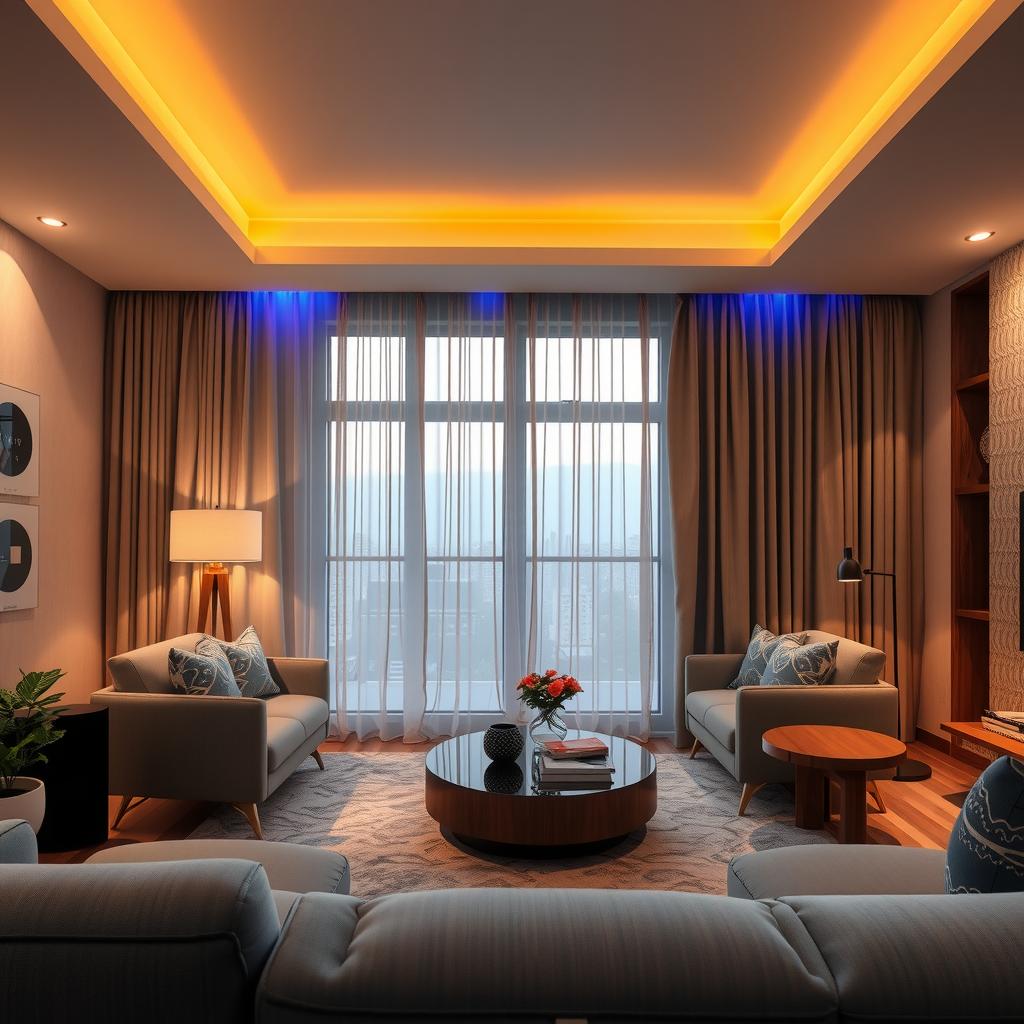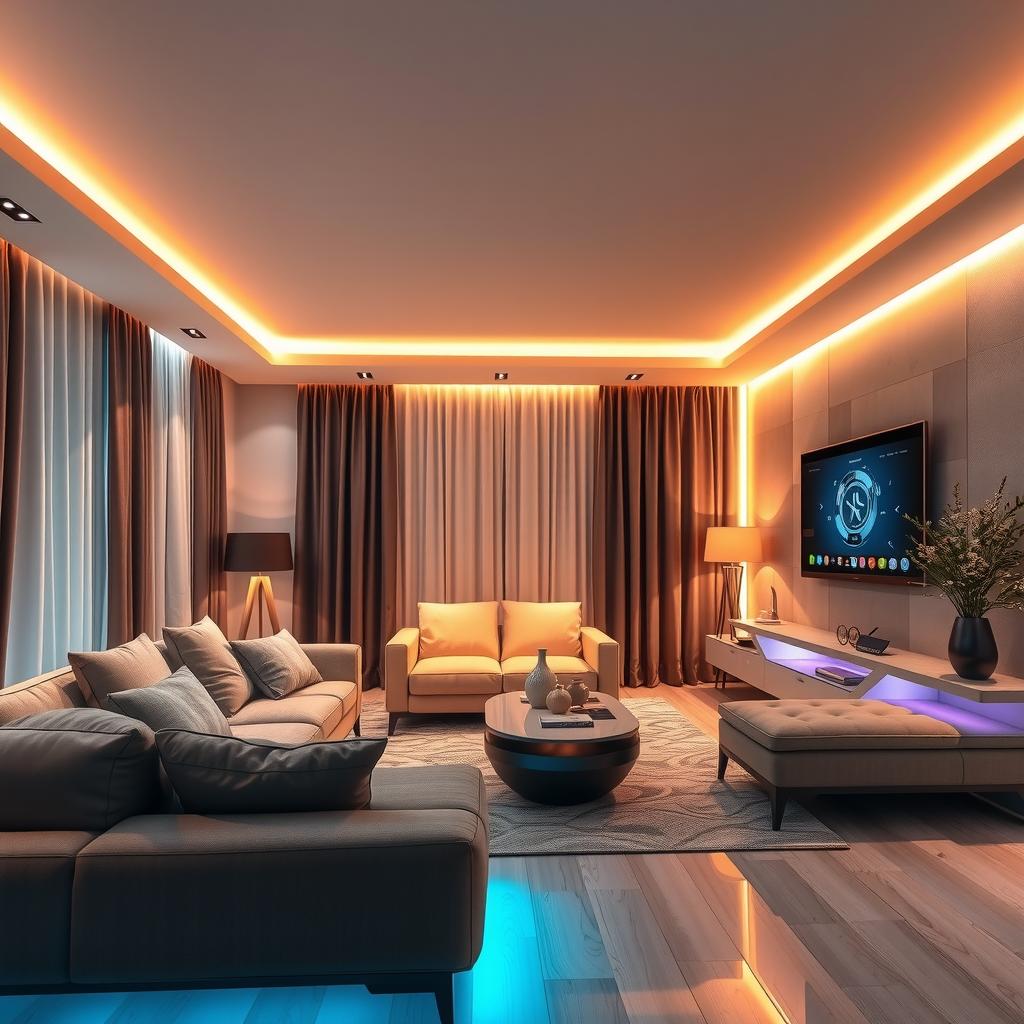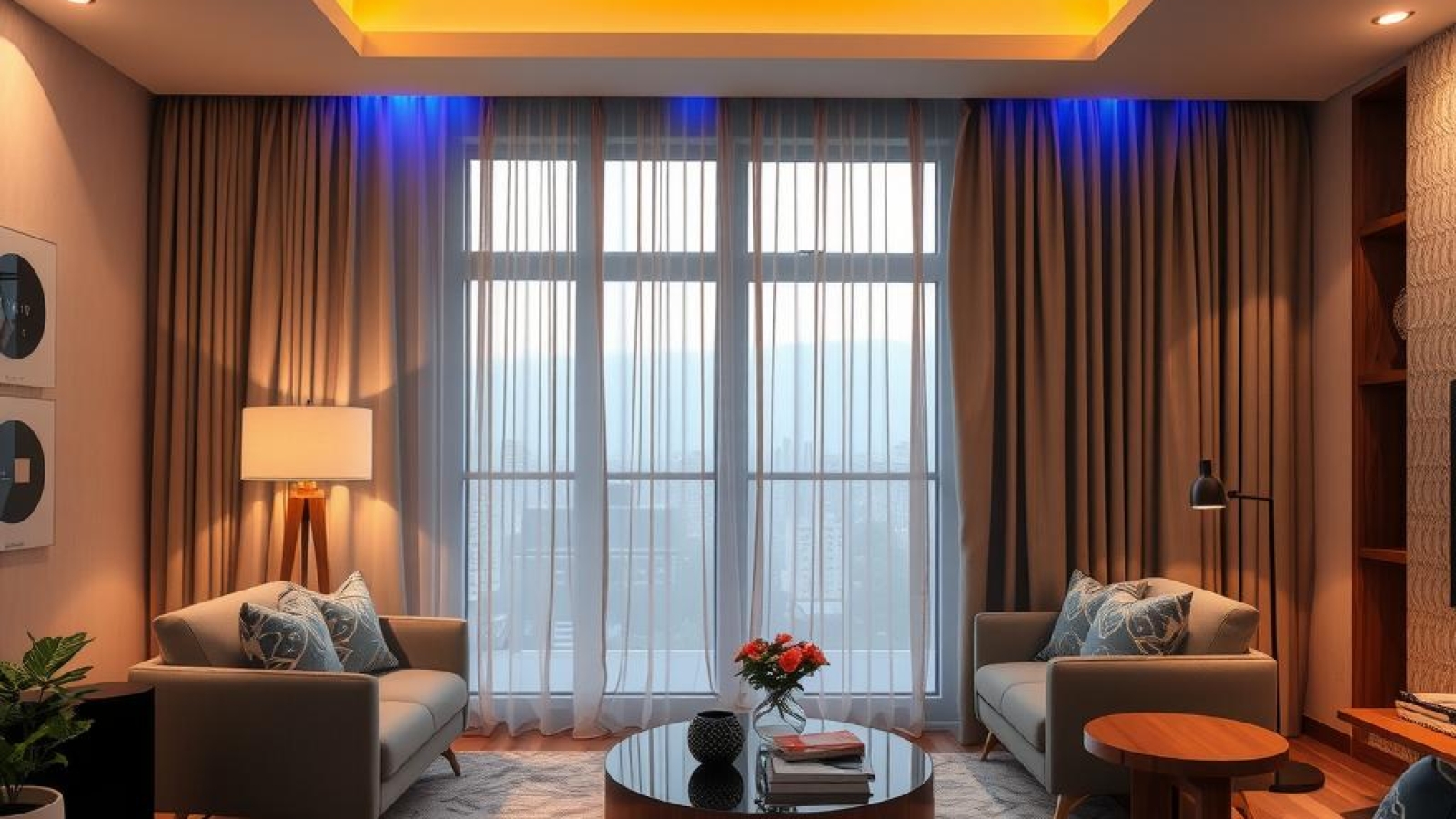In the rapidly evolving world of home automation, many homeowners find themselves grappling with a common challenge: how to create systems that not only function seamlessly but also adapt intelligently to their needs. As smart home technology becomes increasingly sophisticated, the ability to design effective feedback loops within these systems emerges as a critical component for enhancing user experience and ensuring system efficiency. Homeowners often desire solutions that learn from their behaviors, preferences, and feedback, yet many automated systems fall short in delivering this level of responsiveness. This blog post delves into the best practices for designing home automation feedback loops that truly resonate with users while maximizing operational effectiveness.
The core value of establishing well-designed feedback mechanisms lies in their potential to transform static interactions into dynamic experiences. By integrating user input into the fabric of smart home systems, designers can foster an environment where technology feels intuitive rather than intrusive. As users engage more deeply with their environments—whether adjusting lighting based on mood or optimizing temperature settings for comfort—the importance of creating adaptable automation loops cannot be overstated. These loops should not only respond effectively to commands but also anticipate future needs based on historical data and user behavior.
To address this pressing issue, it is essential to explore strategies that leverage user feedback while promoting seamless technology integration. Through thoughtful design choices and careful consideration of how people interact with their devices, creators can build smarter ecosystems where each interaction enhances overall satisfaction. The following sections will outline actionable insights and proven methodologies aimed at improving both functionality and engagement within modern home automation frameworks—ensuring they remain responsive allies in everyday living rather than mere tools.
As readers navigate through these best practices for designing effective feedback systems in home automation, they will uncover key principles that pave the way for innovative solutions tailored specifically to individual lifestyles. With an emphasis on understanding user needs and fostering communication between devices—a crucial aspect often overlooked—this article promises valuable takeaways for anyone looking to elevate their smart home experience beyond basic functionalities toward a truly integrated lifestyle solution.

Key Takeaways:
-
User-Centric Design: Understanding user preferences is crucial for creating effective feedback loops in home automation systems. When designers prioritize the end-user experience, they can develop intuitive interfaces that minimize frustration and enhance system efficiency. This approach leads to more meaningful interactions between users and their smart home devices.
-
Iterative Feedback Mechanisms: Establishing robust channels for user feedback allows developers to refine their products continuously. By integrating real-time data collection methods within the automation loops, designers can adapt smart home systems to better meet individual needs over time, ensuring sustained engagement from homeowners.
-
Balancing Complexity with Simplicity: While advanced technology plays a significant role in enhancing the capabilities of smart home systems, it is essential that these enhancements do not complicate user interactions. The best practices involve maintaining simplicity in design while leveraging sophisticated tech integration, ultimately fostering a seamless user experience that encourages ongoing interaction with automated solutions.

Understanding Home Automation: The Importance of Feedback Loops
Enhancing User Experience through Smart Interactions
In the realm of home automation, feedback loops play a pivotal role in refining and enhancing user experience. These loops, which consist of systems that collect user data and adjust their behavior accordingly, are integral to creating an environment that is not only comfortable but also efficient. As technology integration continues to evolve, smart home systems increasingly leverage real-time data to adapt functions based on individual preferences and behaviors. This process begins with the collection of user feedback—be it through direct input or observed interactions—which then informs how these automated systems operate.
When users engage with smart home technologies, they often expect a seamless experience where the system anticipates their needs rather than merely responding to commands. For example, if a household consistently prefers certain lighting settings during movie nights, an effective automation loop would recognize this pattern over time. By adjusting automatically when similar conditions arise (like dusk or weekends), these systems enhance the overall ambiance without requiring manual intervention each time. Such design feedback is essential; it transforms simple automation into intuitive living experiences that align closely with daily routines.
Moreover, employing best practices in designing these feedback loops can significantly improve system efficiency across various applications within home environments. When integrating multiple devices—from thermostats to security cameras—the communication between them must be fluid and responsive to ensure optimal functionality as well as energy conservation. A well-designed feedback mechanism tailors responses based on cumulative data about usage patterns and environmental factors, allowing for adjustments such as temperature regulation or lighting dimming at specific times of day without compromising comfort.
User involvement remains critical throughout this process; continuous engagement allows for ongoing refinement of preferences which directly feeds back into the operation of smart devices. If individuals frequently modify temperature settings via their apps or manually adjust lights according to mood changes, incorporating this kind of user feedback helps create robust profiles that inform future actions by the system itself—ultimately resulting in enhanced satisfaction for those utilizing these advanced technologies.
In conclusion, understanding how automation loops function within home automation provides clarity on their significance regarding improved usability and user-centric designs. Through diligent attention paid toward implementing responsive mechanisms backed by comprehensive data analysis from users’ habits and desires, manufacturers can continually innovate products aimed at providing superior experiences in everyday life while ensuring efficiency remains paramount throughout all operations involved within smart homes.
Designing Intuitive Interfaces for User Feedback
The Importance of User-Centric Design in Smart Home Systems
When developing smart home systems, the design of feedback mechanisms is paramount to enhance user experience and system efficiency. A well-designed interface should not only cater to the user’s immediate needs but also adaptively respond to their preferences over time. By implementing effective feedback loops, designers can ensure that users feel engaged with their technology rather than overwhelmed by it. Best practices in this realm include simplifying navigation and utilizing clear visual cues that guide users through various functionalities without confusion. Additionally, incorporating contextual help or tooltips can provide users with instant assistance, making interactions more intuitive and satisfying. This responsiveness underscores a commitment to understanding individual user behaviors; thus, allowing for tailored experiences that resonate deeply with diverse audiences.
Leveraging Technology Integration for Enhanced Feedback
Integrating Responsive Systems into Everyday Use
The integration of advanced technologies plays a significant role in creating responsive systems that prioritize user feedback effectively. By embracing cloud computing and machine learning algorithms, developers can analyze usage data in real-time, enabling continuous improvement based on direct input from users. This adaptability ensures that smart home systems remain relevant as personal preferences evolve over time. For instance, if a user frequently adjusts thermostat settings during certain hours, the system could learn these patterns and proactively adjust itself accordingly—creating an automation loop where feedback leads directly to improved functionality without requiring additional input from the user each time they engage with the device. Such proactive features not only increase satisfaction but also drive greater engagement within smart environments.
Creating Effective Communication Channels
Establishing Clear Pathways for User Engagement
An essential aspect of designing effective feedback mechanisms lies in establishing robust communication channels between users and technology providers. Users should have straightforward pathways for providing insights about their experiences with automated processes or any challenges faced while using smart home features. These channels might include integrated surveys after key interactions or forums where individuals can share suggestions publicly—enhancing community-driven improvements within these systems as well as fostering trust between consumers and manufacturers alike. Furthermore, ensuring transparency around how this data is utilized will bolster confidence among users who may be hesitant about sharing personal information due to privacy concerns.
Proactive Adaptation Through Continuous Improvement
Building Systems That Learn From User Interactions
As technology continues evolving rapidly alongside consumer expectations, maintaining relevance requires ongoing vigilance regarding design quality rooted firmly in obtaining valuable user feedback efficiently across varying contexts of use: family gatherings versus solitary moments at home require different approaches altogether when crafting communications strategies! Regularly updating interfaces based on aggregated insights helps uphold optimal performance levels while cultivating loyalty among tech-savvy homeowners eager for seamless integrations into daily routines—the ultimate goal being nothing less than perfect harmony achieved through intelligent designs marrying form & function seamlessly together!
Crafting Personalized Experiences Through Data Analysis
Through sophisticated data analysis techniques like predictive analytics employed strategically throughout every stage—from initial concept development right up until post-launch evaluations—it becomes possible not just simply reactively responding but instead pro-actively anticipating individual wants/needs long before expressed verbally outright! Thus ultimately empowering end-users via elevated autonomy experienced firsthand along journeys undertaken navigating myriad options available therein leaving lasting impressions behind illuminating paths leading future innovations built upon solid foundations laid today strengthening connections forged initially via thoughtful considerations implemented now paving ways toward transformative outcomes realized down lines ahead shaping landscapes entirely anew once thought unattainable previously envisioned merely existing dreams awaiting fruition made manifest finally emerging tangible reality exhibiting excellence attained collectively striving hand-in-hand onward forging ahead ever boundlessly forever unfurling infinite possibilities jointly journeyed forth extending even further beyond horizons beckoning bright promising futures alive brimming potentiality endless opportunities awaiting discovery patiently lingering just outta reach till seized grasped boldly embraced fervently cherished warmly held dear tightly knit closer woven fabric familial bonds nurtured lovingly tended flourishing perpetually blossoming eternally thriving continually inspiring generations yet come onward always seeking fresh endeavors embarkings together united harmoniously transcending barriers bridging gaps connecting heartstrings resonantly echoing timeless melodies sung endlessly throughout ages past present future intertwined beautifully inevitably destined fulfill fates entwined symphonies orchestrated masterfully captivate souls profoundly touch hearts indelibly marking lives enriching existence immeasurably consistently aspiring betterment restoration upliftment happiness wellbeing joy serenity peace tranquility everlasting solace found nestled snugly cocooned wrapt tightly cozily sheltered securely cradled gently safeguarded lovingly tenderly coddled nourished sustainably flourishing abundantly bursting forth vibrantly radiating warmth light uplifting spirits elevating minds broadening horizons expanding realms uncharted unlocking potentials limitless vast expanses await exploration adventure beckons eagerly urging all venture forth embark amidst wonders unfolding marvels grace unveil before eyes wide open revelries dance elegantly celebrating life exuberantly shared amongst fellow travelers traversing winding roads trodden crossing bridges spanning chasms deep soaring heights reached soaring skies painted vividly hues brilliant kaleidoscopes shimmering brightly embody essence true spirit humanity boundless love kindness respect honor integrity interwoven threads tapestry life intricate beauty woven intricately woven weave destinies unite shared histories craft legacies
Real-World Applications: Transforming Homes into Smart Environments
Enhancing User Satisfaction through Automation Loops
In the realm of home automation, successful implementations of feedback loops have redefined user experience and engagement. By integrating advanced smart home systems, homeowners are now able to customize their environments in ways that were previously unimaginable. A notable case study involves a suburban community that adopted an integrated smart lighting system, which utilized real-time user feedback to adjust brightness levels depending on the time of day and occupancy patterns. This design not only enhanced energy efficiency but also fostered increased satisfaction among residents who reported a more comfortable living atmosphere. The continuous collection and analysis of user feedback allowed for iterative improvements, resulting in adjustments that aligned closely with individual preferences—demonstrating how effective feedback mechanisms can transform routine interactions into seamless experiences.
Leveraging Technology Integration for Efficiency
Best Practices in Feedback Implementation
Another compelling example highlights the deployment of intelligent thermostats across urban apartments, where design feedback loops played a crucial role in enhancing thermal comfort while minimizing energy consumption. Residents engaged actively with these devices, providing data regarding temperature preferences at various times throughout the day. The thermostat systems then employed this information to create personalized heating schedules that adapted automatically based on learned behaviors over time. This technology integration not only maximized system efficiency but also demonstrated best practices for implementing user-driven innovations within smart environments, ensuring that occupants felt empowered rather than dictated by technology.
Case Studies Illustrating Engagement Improvements
The Role of User Experience Design
A further illustration is found within a family-focused housing development where voice-activated assistants were introduced alongside security features linked directly to homeowner preferences via mobile applications. In this instance, families experienced heightened feelings of safety due to automatic alerts triggered by unusual activity detected through integrated cameras; however, it was the ability to provide instant user experience adjustments—such as altering device sensitivity based on direct input—that truly exemplified effective usage of automation loops. Each piece contributed uniquely towards creating an interwoven ecosystem wherein users felt increasingly connected not just with their homes but also with each other—a testament to community building fostered through thoughtful technological implementation.
Continuous Improvement Through Responsive Systems
Building Resilient Home Environments
Lastly, one cannot overlook ongoing advancements involving kitchen appliances equipped with machine learning capabilities designed specifically for culinary enthusiasts seeking effortless cooking experiences at home. These appliances utilize past meal preparation data combined with real-time input from users about desired outcomes or ingredient availability—creating what might be termed an intuitive cooking assistant capable of suggesting recipes tailored exclusively for individual tastes and dietary requirements while tracking success rates over time through system analytics driven largely by consistent user interaction. Such instances underline how critical responsive systems become when aiming towards longevity in product engagement; ultimately leading consumers toward adopting more holistic approaches concerning daily tasks within their residences as they embrace evolving technologies designed around them.
Frequently Asked Questions:
Q: What are some effective best practices for creating engaging feedback loops in home automation systems?
A: Effective best practices for crafting engaging feedback loops in home automation involve prioritizing user experience and incorporating intuitive design elements. This can be achieved by simplifying interfaces, ensuring that responses from smart home systems are timely and relevant, and actively soliciting user feedback to refine functionalities. By focusing on these areas, developers can create a more satisfying interaction between users and their technology.
Q: How does user feedback influence the efficiency of smart home systems?
A: User feedback plays a crucial role in enhancing the system efficiency of smart home systems. It allows designers to understand how users interact with their devices, identifying pain points or areas where improvements can be made. By systematically integrating this input into the design process, developers can tailor features to better meet individual preferences, ultimately leading to a more responsive and enjoyable experience.
Q: Why is it important to maintain simplicity when designing automation loops within smart homes?
A: Maintaining simplicity is vital when designing automation loops as it directly impacts user engagement and satisfaction. A complex interface may deter users from fully utilizing their smart home systems, while straightforward designs encourage frequent interaction. By balancing sophisticated technology integration with an uncomplicated user experience, homeowners are more likely to embrace automated solutions, fostering ongoing engagement with their devices.

Add a Comment